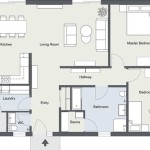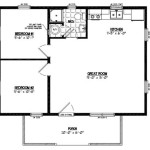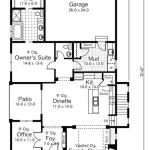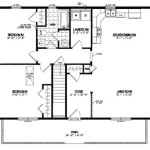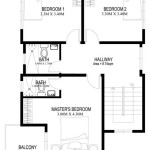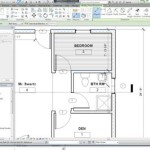How Can I See the Floor Plan of My House?
Obtaining a floor plan for a house is a common need for homeowners, prospective buyers, and even renters. A floor plan is a scaled diagram demonstrating the layout of a property, including the dimensions of rooms, walls, doors, windows, and other fixed elements. These plans are useful for renovations, furniture arrangement, insurance purposes, or simply understanding the spatial relationships within a dwelling. Several methods are available to acquire or reconstruct a floor plan, each with varying degrees of accuracy and effort involved.
Accessing Existing Floor Plans
The most direct way to see a floor plan is to locate one that already exists. This approach typically saves time and effort compared to creating a plan from scratch. Several potential sources could hold the desired documentation.
Original Building Plans: The original blueprints or building plans created during the construction of the house are the most accurate source. These plans are usually detailed, including structural information and precise measurements. To access these, consider the following avenues:
Local Government Archives: City or county building departments often retain copies of building permits and associated documentation, including floor plans. Accessing these records may require submitting a formal request and paying a fee. The process can be time-consuming, but it's often the most reliable way to acquire an original plan, especially for older homes.
Previous Owners: Contacting the previous owners of the house can sometimes yield results. They may have retained a copy of the building plans from when they purchased the property or during any remodeling projects they undertook.
Architect or Builder: If the house was custom-built or significantly renovated by an architect or builder, they might have records of the floor plan. Contacting them directly could provide access to the original documentation or updated versions.
Mortgage or Title Companies: During the initial mortgage process or title transfer, floor plans might have been included in the documentation. Reviewing these records could uncover a usable floor plan, although the level of detail may vary.
Real Estate Listings: When a house is listed for sale, real estate agents often include a floor plan as part of the marketing materials. While these plans may not always be perfectly accurate or to scale, they can provide a general overview of the layout. Accessing archived real estate listings can be done through various online real estate platforms or by contacting real estate agents who have experience in the area.
Homeowner's Insurance Policies: Certain homeowner's insurance policies might require or include a basic floor plan as part of the documentation process. Reviewing the policy documents could potentially reveal a simplified floor plan, which can serve as a starting point.
Measuring and Drafting a Floor Plan Manually
If existing floor plans are unavailable, creating one manually is a viable option. This method requires careful measurement and drafting skills. Accuracy depends heavily on the precision of the measurements and the attention to detail during the drafting process.
Gathering Supplies: Before starting, gather the necessary tools and materials. This typically includes:
Measuring Tape: A long, accurate measuring tape (at least 25 feet) is essential for measuring room dimensions and wall lengths. Laser measuring devices can improve accuracy and speed up the process.
Graph Paper: Using graph paper simplifies the process of drawing to scale. Choose a scale that is appropriate for the size of the house and the level of detail required (e.g., 1/4 inch = 1 foot). Larger grid sizes are easier to work with.
Pencil and Eraser: A sharp pencil allows for precise drawing, and an eraser is crucial for correcting mistakes.
Clipboard: A clipboard provides a stable surface for holding the graph paper and taking notes while moving around the house.
Level: A small level can be used to ensure that measurements are taken horizontally.
Taking Measurements: The measurement process involves systematically measuring each room and hallway. Follow these steps:
Consistent Units: Use the same unit of measurement (e.g., feet and inches) throughout the entire process to avoid confusion and errors.
Measure Walls: Measure the length of each wall in every room. Start in one corner and measure to the next, noting the measurements on the graph paper.
Measure Openings: Measure the width of doorways, windows, and other openings. Also, measure the distance from the corner of the room to the edge of each opening.
Measure Fixed Elements: Measure the dimensions and locations of fixed elements such as fireplaces, built-in shelves, and plumbing fixtures. These elements should be accurately represented on the floor plan.
Measure Wall Thickness: It's important to measure the thickness of the walls, particularly exterior walls, as this can affect the overall dimensions of the house.
Sketching as You Go: As you measure, create a rough sketch of each room on the graph paper. This helps to visualize the layout and ensure that all necessary measurements are taken.
Drafting the Floor Plan: Once all the measurements are taken, it's time to draft the floor plan on the graph paper. This process involves accurately representing the dimensions and locations of all the measured elements.
Choose a Scale: Select a suitable scale that allows the entire house to fit on the graph paper while still maintaining a reasonable level of detail. A common scale is 1/4 inch = 1 foot, but this may need to be adjusted depending on the size of the house.
Start with Exterior Walls: Begin by drawing the exterior walls, using the overall dimensions of the house. Ensure that the corners are square and the walls are straight.
Add Interior Walls: Next, add the interior walls, using the measurements taken earlier. Pay close attention to the wall thickness and the location of doorways and windows.
Include Fixed Elements: Include all the fixed elements, such as fireplaces, built-in shelves, and plumbing fixtures. Ensure that these elements are accurately positioned and sized.
Label Rooms and Features: Label each room and feature on the floor plan (e.g., "Living Room," "Bedroom," "Bathroom," "Fireplace"). This makes the floor plan easier to understand and use.
Double-Check Measurements: After completing the floor plan, double-check all the measurements to ensure accuracy. Correct any errors that are found.
Utilizing Digital Tools and Professional Services
Several digital tools and professional services can streamline the process of creating a floor plan. These options offer varying levels of automation and accuracy, catering to different needs and budgets.
Floor Plan Apps and Software: Numerous mobile apps and software programs are designed to create floor plans. These tools often use the device's camera and sensors to measure rooms and generate a basic floor plan. Examples include:
Magicplan: Magicplan is a popular mobile app that uses the device's camera to create floor plans. It allows users to scan rooms and automatically generate a 2D or 3D floor plan. Additional features include the ability to add furniture, annotations, and export the floor plan in various formats.
RoomScan Pro: RoomScan Pro is another mobile app that uses the device's sensors to measure rooms. It can create a floor plan by simply touching the device to each wall. The app also includes features for adding doors, windows, and other elements.
SketchUp: SketchUp is a professional-grade 3D modeling software that can be used to create detailed floor plans. It offers a wide range of tools and features for designing and visualizing architectural spaces.
AutoCAD: AutoCAD is a widely used computer-aided design (CAD) software that is often used by architects and engineers. It provides precise drawing tools and features for creating accurate and detailed floor plans.
Online Floor Plan Services: Several online services offer floor plan creation based on uploaded images or sketches. These services typically provide a faster and more accurate alternative to manual drafting.
Floorplanner: Floorplanner is an online platform that allows users to create floor plans by dragging and dropping elements onto a virtual canvas. It offers a wide range of furniture and fixture options, as well as tools for creating 3D visualizations.
SmartDraw: SmartDraw is a diagramming and charting software that can be used to create floor plans. It includes a library of pre-designed templates and symbols, as well as tools for customizing the floor plan to meet specific needs.
Professional Surveyors and Architects: Hiring a professional surveyor or architect is the most accurate and reliable way to obtain a floor plan. These professionals have the expertise and equipment to accurately measure the house and create a detailed plan. While this option is typically the most expensive, it ensures the highest level of accuracy and detail.
Surveying: Surveyors use specialized equipment, such as laser scanners and total stations, to accurately measure the dimensions of a building. They can create a detailed floor plan that includes all structural elements and features.
Architectural Services: Architects can create floor plans as part of a larger design or renovation project. They can also provide advice on how to optimize the layout of the house and make the most of the available space.
Considerations When Choosing a Method: When deciding how to obtain a floor plan, several factors should be considered:
Accuracy: The required level of accuracy depends on the intended use of the floor plan. For simple furniture arrangement, a rough sketch may be sufficient. However, for renovations or insurance purposes, a more accurate plan is needed.
Budget: The cost of obtaining a floor plan can vary widely depending on the method used. Manual drafting is the least expensive option, while hiring a professional surveyor or architect is the most expensive.
Time: The amount of time required to obtain a floor plan can also vary. Manual drafting can be time-consuming, while digital tools and professional services can often provide a faster turnaround.
Skill Level: The level of skill required to create a floor plan depends on the method used. Manual drafting requires careful measurement and drafting skills, while digital tools can simplify the process.
By carefully considering these factors and exploring the available options, individuals can choose the method that best suits their needs and obtain a floor plan that meets their specific requirements.

Changing The Layout Of My House Houzz

How Do I Get A Floor Plan For My Property

9 Ways To Find Floor Plans Of An Existing House Blueprints Archid

Pin On House Layout
Going Paperless Creating A Digital Version Of Your House Using Evernote Penultimate And Skitch Jamie Todd Rubin

House Plans How To Design Your Home Plan

House Plans How To Design Your Home Plan

My Dream House

My Ideal House Floor Plan Plans Courtyard Simple

My Home Free Design 3d House Floor Plans By Planner 5d
Related Posts

